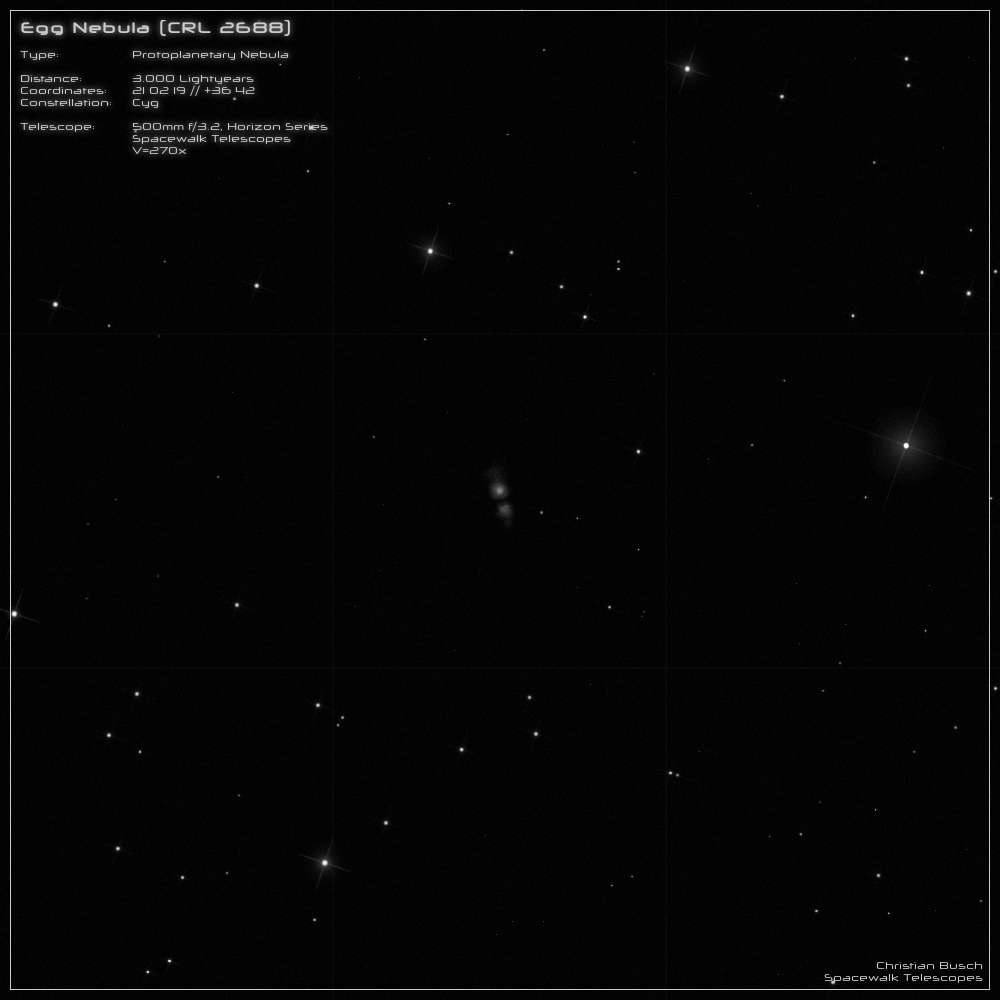Egg Nebula - CRL 2688
The Egg Nebula (designation CRL 2688) is located about 3,000 light-years away from us in the middle of the dense Milky Way in the
constellation "Cygnus". It was discovered in 1975 on photographic plates of the POSS - that means, its existence has been known for
about 50 years only.
"CRL 2688" belongs to the group of so-called "Protoplanetary Nebulae" (PPN). This means that the Egg nebula is yet to become a real
planetary nebula - so what we see here, is a preliminary stage of it. A PPN is characterized by an aging star in its center, which ejects parts of
its envelope at irregular intervals. In the case of "CRL 2688" the time interval is about 150 to 500 years and can be recognized by the
numerous concentric circles which can be seen e.g. on images of the Hubble Space Telescope. From this, similar to tree rings, the age
of the PPN can be determined to be about 10,000 years. During this time the envelope has expanded with about 20km/s up to a distance
of 0.6 light years into space. Another feature of the Egg Nebula are two bright beams on each side. Here the light from the central star
(ZS) breaks through an opening in the form of a ring, which in turn has been milled into the dust cocoon by two very fast jets of matter.
How these jets are created, however, is still unclear.
The star itself is not visible from Earth because it is hidden behind a dense dust disk. Based on the refracted light, the spectral class of
the central star could be determined to be F5 - it is thus about 6,400°C hot and thus 900 Kelvin hotter than the Sun. But this is not yet
enough to ionize the envelope and turn it into a real planetary nebula. This will be the case in a few thousand years.
----------------------------------------------------------------------------------------------------------------------------------------------
The Egg nebula is a very exciting sight in a 20 inch telescope at high magnification. It lies in the middle of the dense Milky Way, which
makes it even more delightful to observe. With an apparent size of 30"x15", the nebula is about as big as the planet Saturn and
magnifies well because of its high surface brightness.
Unfortunately, at the time of observation I only had a maximum magnification of 270x available, so I certainly could not perceive all the
details that should be visible with 20".
But even so, many details were visible. The PPN itself consists of two nodes separated by a dark dust band. The northern node appears
brighter and larger with a central condensation. The two breakthrough rays mentioned above can be seen as delicate two-dimensional
brightenings - again, the northern component appears brighter and larger. Unfortunately, I could not yet see the rays separately at this
magnification.

